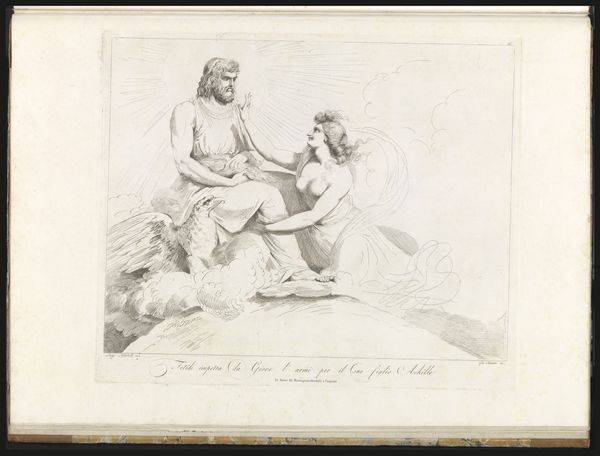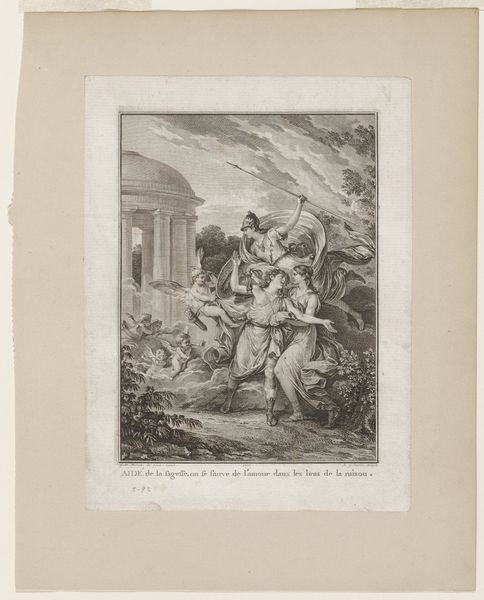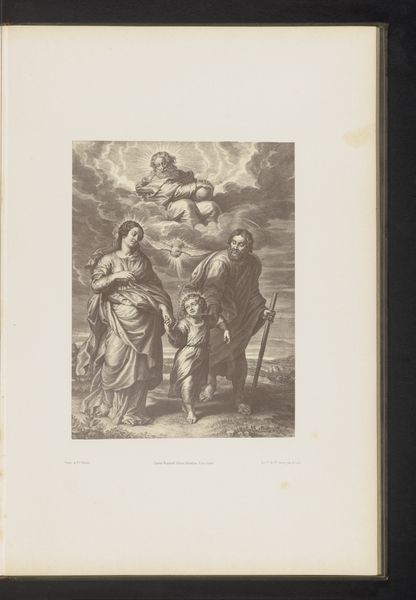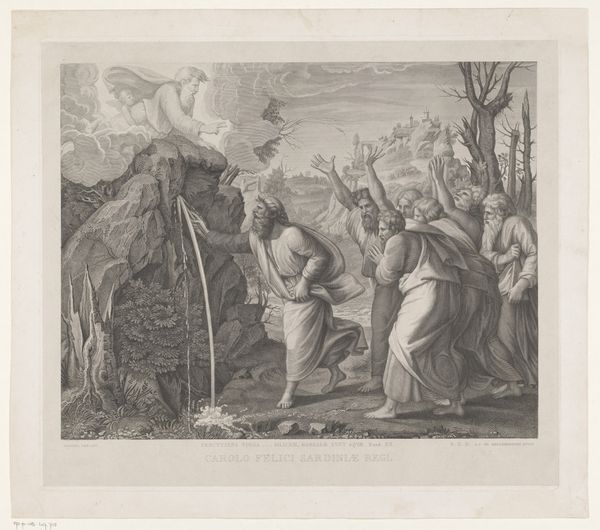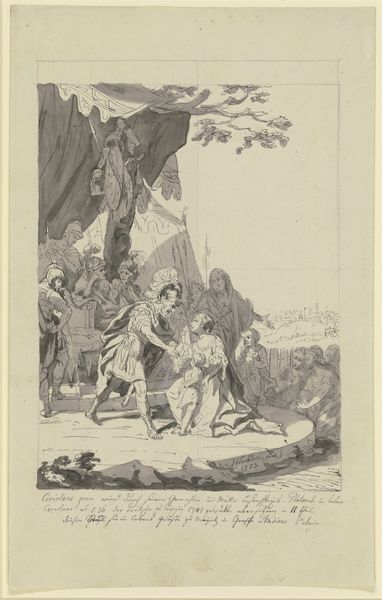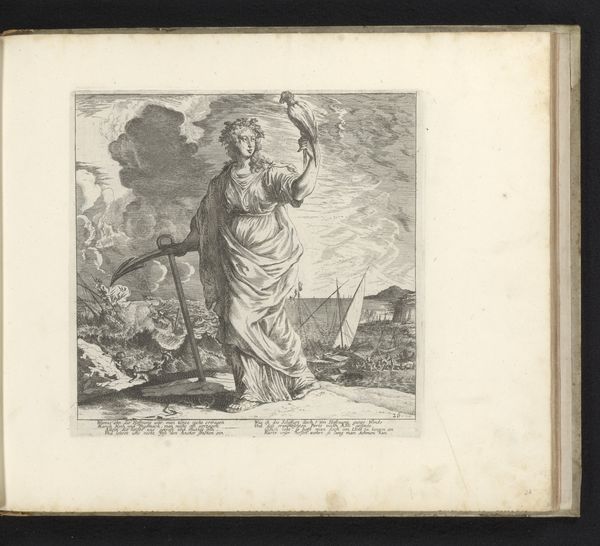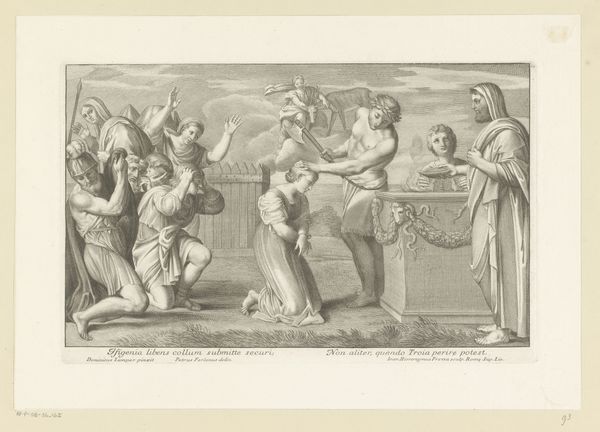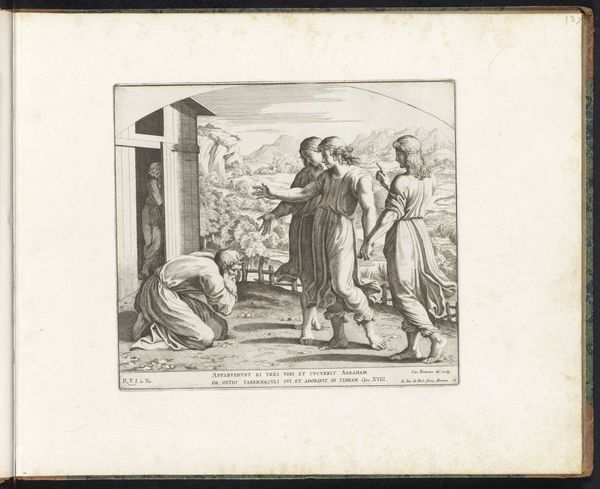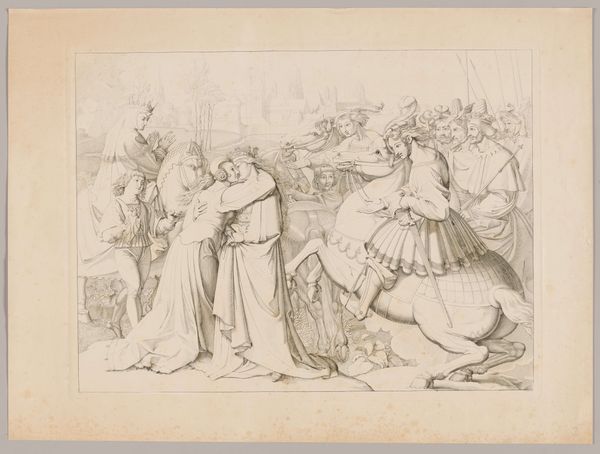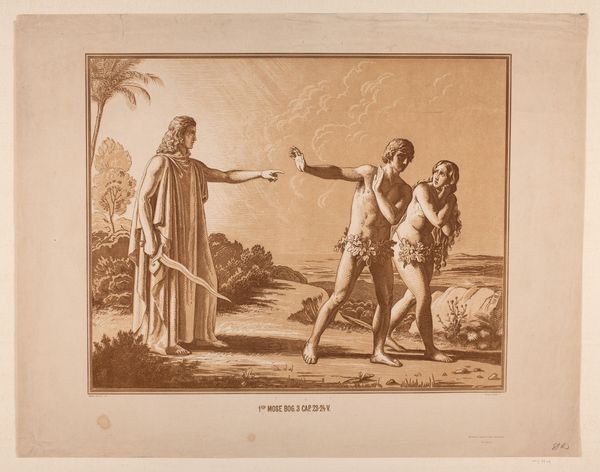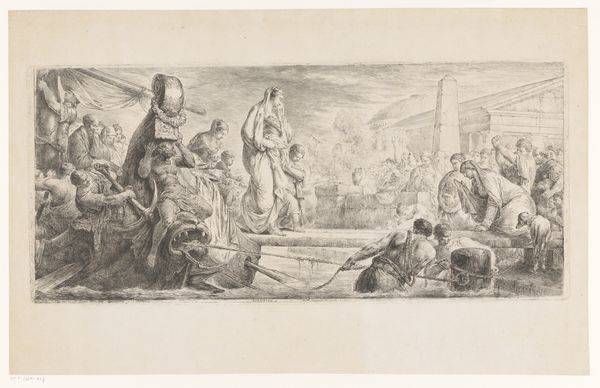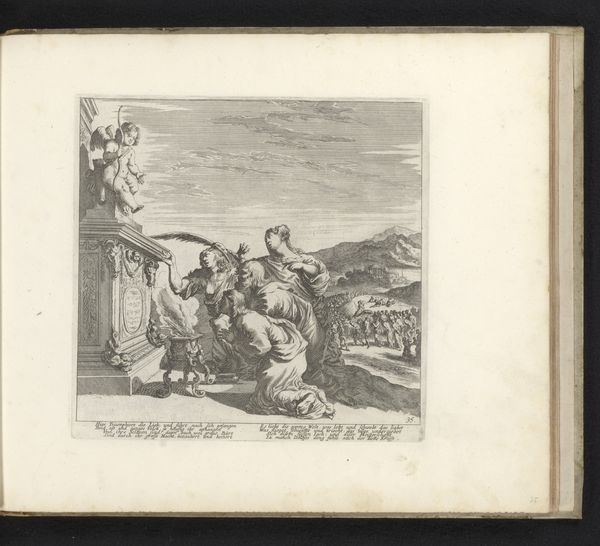
print, engraving
#
neoclacissism
#
ink drawing
# print
#
old engraving style
#
figuration
#
line
#
history-painting
#
italian-renaissance
#
engraving
Dimensions: height 412 mm, width 491 mm
Copyright: Rijks Museum: Open Domain
Curator: Here we have Damiano Pernati’s “Dante's Inferno: open graves of the heretics,” created in 1804. It's an engraving, rendered in a clean, neoclassical style. Editor: My immediate impression is of stark monumentality. The figures are rendered with incredible precision, a clean and careful engraving. But the overall effect is undeniably unsettling. Curator: Indeed. Pernati, deeply inspired by Dante Alighieri’s epic poem, created this print reflecting a significant shift towards visual interpretations of literature. We must consider the broader societal implications, specifically how printmaking allowed for the democratization of art, granting wider access to narratives like the Inferno. Editor: But the visual language is what captures me first. Observe the precise linearity, the stark contrast between light and shadow. The use of line to define form is incredibly disciplined. The bodies are rendered to express strength and human vulnerability, like the figure waist-deep in the open tomb. Curator: Consider how the neoclassical movement looked to antiquity for its artistic foundations. The muscular physiques reference classical sculpture, a direct tie to the values the piece aims to project. Dante's choice to feature heretics highlights contemporary social and political issues around religious conformity and power struggles. Editor: But how cleverly Pernati frames our perception! Dante, a clear protagonist due to the brightness cast onto his features and placement forward in the frame, looks in with morbid curiousity, while other figures appear as though background scenery. I wonder if Dante perhaps does not truly belong in such a horrific space. Curator: What's truly captivating is how Pernati uses Dante’s personal journey through hell to examine justice, morality, and authority during the Neoclassical period. His choice of representing literary scenes shows his intention to speak to his audience about their world. Editor: And look at the open tombs. Notice the orthogonal planes and the recession into depth? There’s an almost unsettling sense of geometric order imposed on the chaos. The engraving masterfully contrasts the chaotic figures with the rigid geometry to establish order among turmoil. Curator: In conclusion, Pernati's print exists as evidence of an era in which art acted as a vehicle for sociopolitical dialogues, effectively placing the dilemmas from Dante into the context of the Neoclassical world. Editor: Yes, the emotional intensity and technical skill converge to create a composition that pulls the viewer into an infernal landscape. Its stark formality speaks volumes about the very nature of divine judgment.
Comments
No comments
Be the first to comment and join the conversation on the ultimate creative platform.
